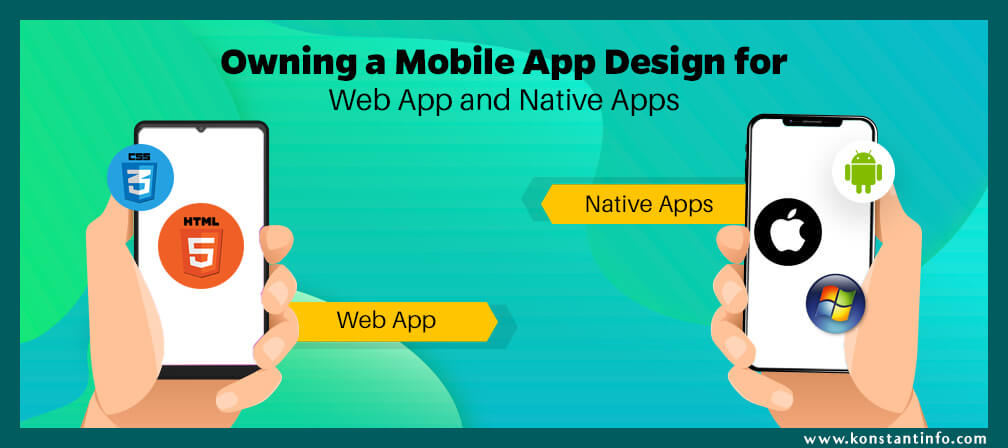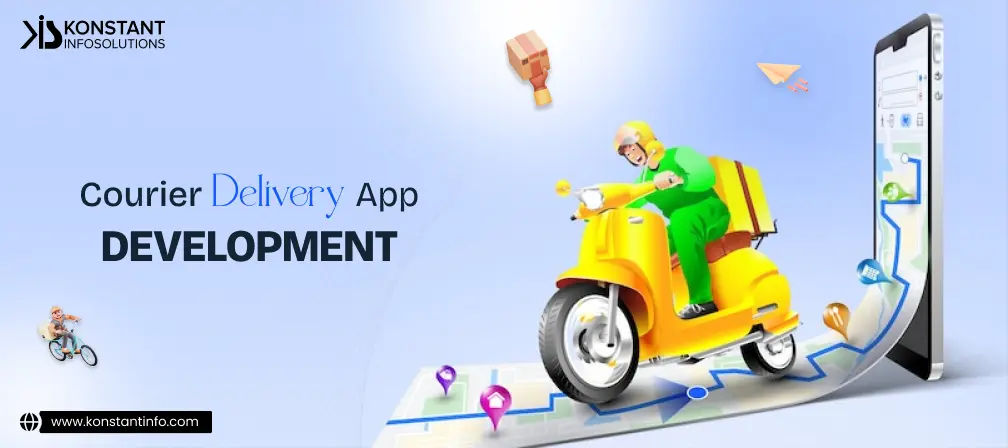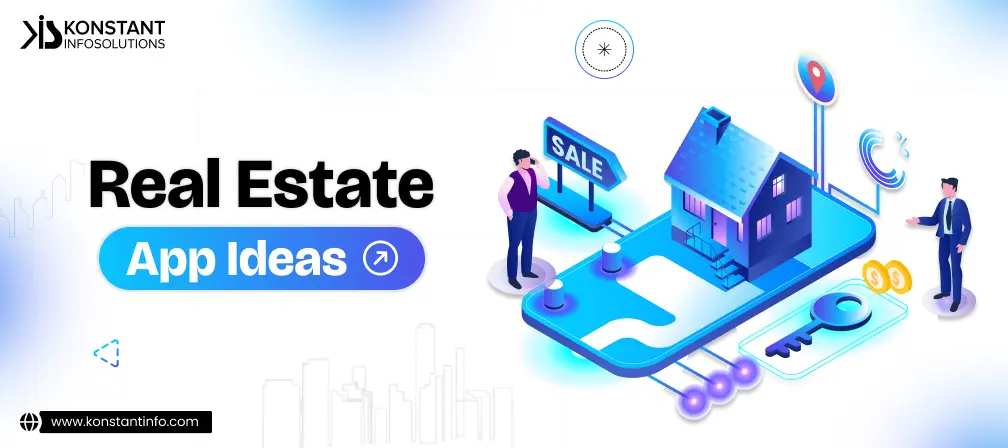Why is there always confusion when it comes to native or web apps? Every type of app has a special purpose. Web apps need not be downloaded from the app store but resolve the same purpose as the website. Native apps are to be downloaded from the app store (for iOS) and Play Store (for Android).
Points To Be Considered While Designing a Mobile Application
- Intense market research – Knowing the target audience, demographics, age group, preferences, choice of usage, etc.
- Analyze where the app will be used – Knowing this ensures that the app has the required functionality and potential to achieve the business purpose.
- Selecting the right platform – Choice of operating systems like Android, iOS, and Windows ensures that the app is based on cross-stage technology. This is important to decide as every technology comes with its own set of advantages and disadvantages and it is always advisable to understand the tradeoffs.
- The design and usability of the app must be decided to keep the target audience in mind. It helps customers understand what they will get and how the app will function.
- Testing is as much essential as the development of the application. The entire mobile application goes through an app life cycle similar to websites. It is important to have the functionality of the application intact along with the design as no matter how promising the app looks, the customers are sure to abandon it in first go if they find any leaks or 404 page not found or broken links.
- Budget and Business Model – Lastly, website development depends upon the budget of the business. An appropriate business model decided the sources of revenue that the app can work.
Why is an Application Architecture Important?
As languages, tools, and frameworks become obsolete, software developers always need to evolve and constantly adapt their development techniques according to the changing requirement. As with every application either web or app, architecture forms the basis. It is often composed of 5 basic steps: programming language, API, frameworks, integrations and network topology. All these aspects must be explored and utilized according to the need of the hour and available skillset.
- Test-Driven Development helps to refactor code and is especially helpful to new developers to understand and help them go with the flow, easing the modularity and not just break another part of the application by producing spaghetti code.
- Continuous Integration and Continuous Delivery (CI & CD) help developers focus on building new features instead of doing repetitive tasks like developing, testing and deploying.
- Persistence is as well another sub-category to architecture. It often includes Object-relational mapping (ORM), seeders and migration.
- ORM: These are libraries that help developers to directly work with the databases without having to worry about writing queries or create an abstraction layer above the storage.
- Seeders: This is the test data that developers can use to initialize the database.
- Migrations: These scripts are used to build the entire database from scratch by making use of models and their corresponding relationships.
- Security – This requires considering Password Hashing/Salting, JWT (JSON Web Token), Cookies/Session Expiry.
- Performance – This requires considering: Page Load Time, Caching, Server-side Rendering, Client-side Rendering and Database Queries.
How different are Web Apps vs. Native Apps?
Web apps and native apps have a unique purpose. While web applications are primarily used for accessing information, native apps are typically used to complete a task (i.e. making an online purchase or searching for any location online).
Design Considerations to Create Web Applications
- Blank State: This represents how the app looks like without data (except for the email that is entered while signing in). This has to be correct as it is the first interface for the client with this app. This stage can either motivate them for further use or can drive them away completely. This can be effectively utilized by putting a media (info-graphic or a video) of how to proceed with the app. But this must be accompanied by skip and back buttons. Providing cues, tips and hints also helps.
- Quota/Usage Information Displays: Let users know about the storage space used and left. This will help them revisit and manage without losing on essential tasks. Such things must be conveyed after prior calculation without blindsiding your customers. Providing this at the footer of the layout in a distinct color can be helpful.
- Plan Upgrading/Downgrading: Users must be periodically updated about any plan upgrading without interfering with the flow. The app must accommodate so changes are done.
- States of UI Elements: Various states of the elements must be preserved like normal, hover, disabled, active, inactive, focused state, etc. CSS elements must be written explicitly for each state.
- Keep the User Interface Simple and Intuitive: User Interface must be simple and interactive. Color combinations, themes, images, graphics must be subtle and make the application powerfully feature-rich.
- Use Visuals Smartly: Images, icons, visuals, charts, graphics can effectually replace long text blocks – do it whenever and wherever required.
- Provide instructions wherever required: Callout boxes are highly effective in enhancing the UI by letting users know the meaning of the interface in story-like form. The key to identifying the places where more information and instructions are needed is to keep it simple and not to overload to dissuade users.
- Optimize UI Speed – A web app should be responsive and fast. Any delays in sequential tasks tend to develop an unconscious resistance to using the app. Apps are tools to accomplish specific jobs if not fast they are neither very effective tools.
- Use the Appropriate Cursor Pointer and Alt Attributes – Styling clickable elements by changing the cursor to a pointer helps indicate that an element is interactive. JavaScript DOM manipulation makes any element clickable.
Design Considerations to Build Native Apps
User experience and user interface are two different disciplines that must be considered while designing a mobile application. UI is the interface component with which users interact. It is what you see in front of you. UX is the user experience using the website or the mobile application. This includes usability, navigation, how easy it is for the user to navigate through the site.
- Responsiveness: Responsiveness is an important part of front-end development. The application should fit into every kind of screen.
- Design Iterations: Design Iteration involves following the process of prototyping, testing, analyzing, and refining the design. If users are provided with what they love, it will go a long way in retaining them.
- Keep it Simple: Just keeping the essential features and not bogging unimportant details is important.
- Get Rid Of Excessive Scrolling: Excessive scrolling must be removed. Designers can, in turn, increase the number of pages and create navigation shortcuts to carry the users to specific points.
- Get to Know Latest Design Trends: Knowing Latest Design Trends is essential for creating the most effective UX and UI.
- Finger-Friendly Designs: Designs have to be finger-friendly and navigation via touch must not be difficult.
- Provide Feedback: If the application takes time to load, a user might have this urge to skip and hop to another application of similar use. They might even think that the application is broken and refrain from using it. So it is always important to give feedback to the user not just when loading the site but after every time a particular task is completed.
Conclusive
Designing calls for recalling little things that should be considered when crafting an interface. It is often easy to gloss the details over when you want to ship a product as quickly as possible, but if you take time to work-out on those little things the interface can become as awesome as possible. One of the most essential compliments about the interface can be that it is easy to use (usability + navigation). When all these points get covered, it helps to produce a conducive environment to work.
Everyone has the technology. You need to find someone who can use technology to your best business advantage. Reach us with your native apps vs. web app queries, take your time in finding the right development and design partner.
About Author
Manish Jain is the co-founder and Managing Director at Konstant Infosolutions. He is responsible for the overall operations of the company and has played a major role in bringing Konstant up from its humble beginnings and, with his immense energy and drive, transforming it into a globally trusted name in IT solutions.



